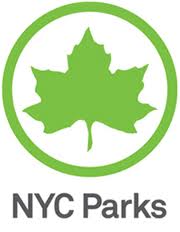
Parks Commissioner Adrian Benepe today joined U.S. Army Corps District Commander Colonel John R. Boulé, Commissioner of the National Parks of New York Harbor Maria Burks, Natural Resources Supervisor for the New York State Department of Environmental Conservation Steve Zahn and Assembly Member Alan Maisel to celebrate the Gerritsen Creek Ecosystem Restoration Project in Brooklyn’s Marine Park. The $8.3 million project was designed to ameliorate the adverse impacts of past filling activities and to create an improved ecosystem where plants and animals can thrive, and residents can better learn about their natural surroundings.
“Gerritsen Creek is one of the original “fingers” of the great “hand” of Jamaica Bay, and over the last century it has been the victim of human intrusions that have damaged its ecological functioning,” said Parks Commissioner Benepe. “Over the last two decades, we’ve made it our goal to clean up the creek, so that it can sustain the myriad of plants, wildlife, and organisms that call it home. We are grateful to the U.S. Army Corps of Engineers, who recognize the need to support this invaluable ecosystem, and whose partnership has brought this project and so many other projects to restore the ecology of Jamaica Bay to fruition. This project is proof that you can restore natural functions and in a small corner of the globe help to improve the planet”
"The Corps of Engineers is excited to be finishing this great ecosystem restoration project with New York City Parks," said New York District Commander Col. John R. Boulé. "This partnership has led to several acres of restored and reconstructed wetlands in Brooklyn that will bring benefits to the community and the entire harbor estuary for years to come."
The project involved the construction of 18 acres of tidal marshland and 23 acres of rare coastal grassland. Once an unremitting Phragmites monoculture, Gerritsen Creek is now the largest restored mosaic of coastal wetland, grassland, shrubland, and forest in the region. The area will be open to the public in the fall after restored vegetation has a chance to become sufficiently established.
The renovations and construction to the east side of Gerritsen Creek were funded generously by the 1995 New York State Clean Air/Clean Water Bond Act Grant and the Department of Environmental Conservation, for a combined total of $1.3 million. The U.S. Army Corps of Engineers allocated $5 million, and the NYC Housing Preservation and Development provided an additional $2 million of funding. The project is an ideal lesson in interagency cooperation, synergy, and economy of scale.
For the better part of the 20th Century, the natural area along Marine Park’s Gerritsen Creek was in limbo. From 1934 through the 1960’s, it was an active dump – one of many wetlands in the city that were being filled with household trash, construction and demolition debris, and dredge material, the dross of the burgeoning modern city. Between the 1970’s and 1995, it lay fallow and was colonized by the three vegetation communities that characterize the city’s former landfills: Common reed (Phragmites australis) on sanitation debris; Mugwort (Artemesia vulgaris) on construction and demolition debris; and native warm season grasses on ocean dredge. Among the three, vast monocultures of Phragmites were the best represented and conspicuous. Salt marshes emerged along the shoreline as fill settled and tides distributed sediments.
Until 1974, Marine Park was the city’s 2nd largest park with 1,822 acres, following Pelham Bay Park with 2,771 acres and beating out Van Cortlandt Park with 1,146 acres. In 1974 the city transferred 1,024 acres of Marine Park to the National Parks Service for inclusion in the newly formed Gateway National Recreation Area.
Over the past sixty years, portions of Marine Park have been improved with recreational facilities, while other areas have been conserved to protect wildlife and plant life. In 1939 the Pratt-White athletic field was dedicated in tribute to the two fathers of Marine Park. A 210-acre golf course opened in 1963, and the John V. Lindsay Model Airport was dedicated in 1971. New ballfields were opened in 1979 and named for baseball lover and police officer Rocco Torre in 1997. Nature trails established along Gerritsen Creek in 1984-85 invite parkgoers to observe a wealth of flora and fauna. Ongoing improvements at the end of the 20th century include the reconstruction of basketball, tennis, and bocce courts; of baseball fields; and of Lenape Playground at Avenue U. The Salt Marsh Nature Center opened in 2000.